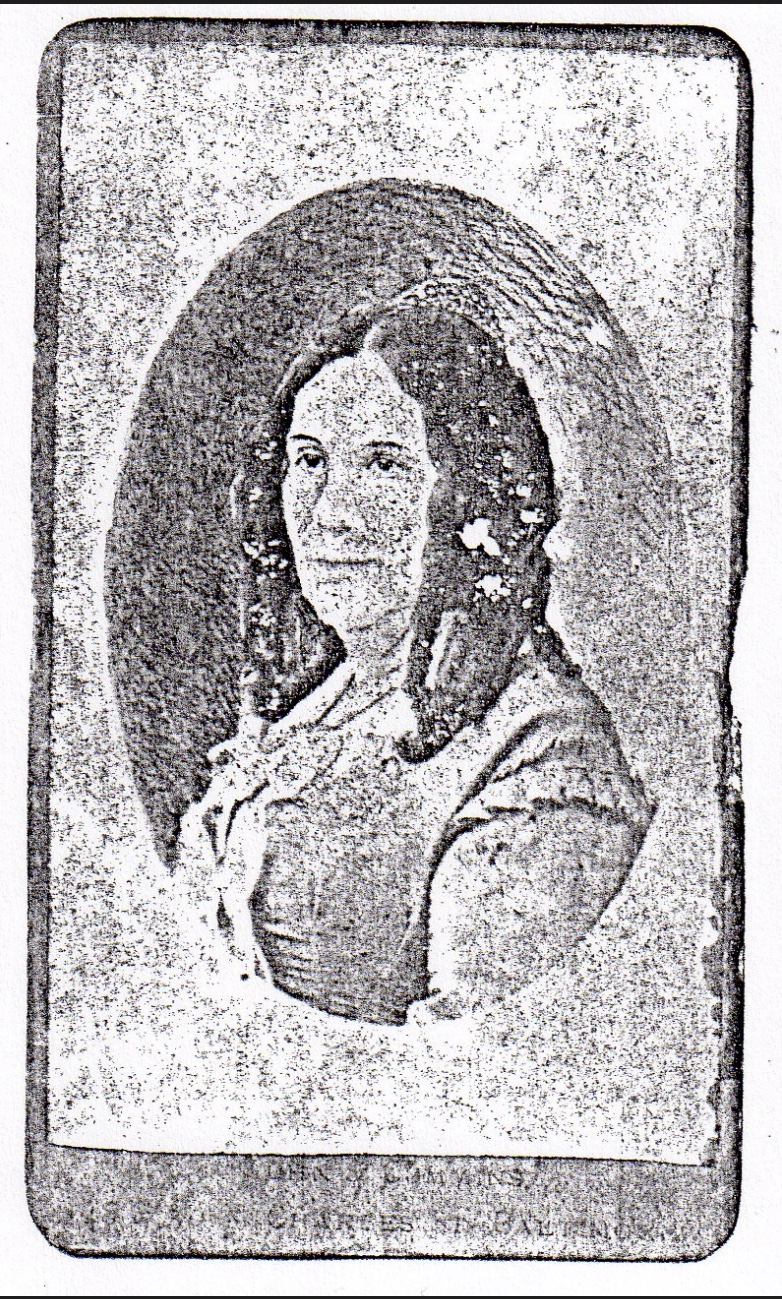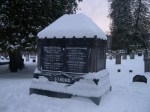Second Lieutenent Jasper Strong stood nearby as the mid-summer sun blazed down on the dark, uniformed backs of the soldiers. They hauled bricks from the stockpile across the sandy, swampy ground to the site of the new fort being built at the Rigolets pass near New Orleans, Louisiana. The fort was one of a string of forts that were being built along the coasts of the Gulf of Mexico and the Atlantic Ocean.
The former wooden fort at the site was known as La Petite Coquille. It was used briefly during the War of 1812 by Andrew Jackson’s troops in the Battle of New Orleans to defend the narrow inlet leading from the Gulf into Lake Ponchartrain thus preventing the British from making a backdoor attack on New Orleans. But the fort was being replaced by a stronger, more formidable brick structure to prevent re-invasion by the British or any other foe.
The year was 1819. Two years earlier President Monroe and Congress had appropriated funds for a seacoast defense system that would organize the planning, design, and construction of a string of brick fortresses at as many as 50 sites to help the country be less vulnerable to attack than it had been with the British only a few years earlier.
Jasper Strong and his friend Frederick Underhill, two recent graduates of the United States Military Academy at West Point, were beginning their military careers in the humid and swampy coastal south far from their homes in Vermont and New York. Strong and Underhill were 16 years old when they entered the Academy in 1814 while the War of 1812 was still being fought.
Underhill, graduating second in his class, received his commission as an Assistant Engineer with the Corps of Engineers. He began his duties in Pass Christian on the Gulf Coast to help with the repair and construction of the southern defenses. Strong was garrisoned at the New Orleans’ fort (later renamed Fort Pike) during its construction, but recognizing he had a knack for business and salesmanship, the army sent him away on recruiting service. But within several months he was transferred to Baton Rouge to serve in the headquarters of the 1st Infantry. The Pentagon Barracks that are still in use today were being constructed while he was stationed there.
Jasper stayed in touch with his engineer friend Frederick in Pass Christian while stationed at Baton Rouge. After a couple of years and much discussion, they decided that with Frederick’s engineering ability and Jasper’s penchant for business they could help the effort more and do better for themselves if they privately contracted to build forts. So in 1823 Strong and Underhill resigned their commissions with the Army and went to work contracting for the Army as a company called Underhill and Firm. They soon went to work for the Corp of Engineers Superintending Engineer William H. Chase who was also a former West Point classmate. Their firm contracted to supply labor that would work on Fort Pike at the Rigolets and Fort Jackson on the Mississippi River below New Orleans.
In 1828, William Chase was transferred to Pensacola to supervise the construction of a new fort on Santa Rosa Island that would defend the new Navy Yard being constructed on Pensacola Bay. Chase made the decision to contract with Underhill and Strong because of the large labor force of black mechanics they had at their disposal. Most of the mechanics were middle-aged slaves, yet they were paid $1.50 a day for their work.
But within the first year of construction of the new Fort Pickens, Frederick Underhill died. This left Jasper Strong in a precarious situation. He decided to go into business with John Hunt as J. Hunt and Firm. They bought property for a brick-making business near Pensacola to help provide the millions of bricks needed for the fort’s construction. Other companies joined in competition and soon there was a surplus of three million bricks in the navy yard.
William Chase then requested more funds to build another fort across the mouth of Pensacola Bay from Fort Pickens called Fort McRee. Soon after the completion of that fort, Chase wanted additional funds to construct a new fort near the navy yard on the site of an old Spanish fort called Fort Barrancas. Chase would continue to use Strong’s workforce to help build other forts from New Orleans to Key West during the years leading up to the Civil War.
Some time after the death of Jasper’s friend Frederick Underhill, Jasper married Underhill’s widow, Mentoria Nixon, daughter of Gen. George Henry Nixon of Pearlington, MS, and they made their home in Pensacola. But not long after their marriage, the former Mrs. Underhill died. In time, Jasper began courting her sister Eliza Julia Nixon, 24 years his junior, and soon they were married. They would have six children together.

As the Civil War commenced in 1861, Jasper and Eliza moved north to his boyhood home in Hartford, Vermont to escape the scourge of war that would surely come to the South. But Jasper would never make it back down to Pensacola. He died shortly after the close of the war in November of 1865.  Eliza, being from the coastal south, moved back there after Jasper’s death. She is buried in Pearlington, MS near the graves of her parents, Gen. George Henry Nixon and Rebecca Bracey Nixon.
Eliza, being from the coastal south, moved back there after Jasper’s death. She is buried in Pearlington, MS near the graves of her parents, Gen. George Henry Nixon and Rebecca Bracey Nixon.
Jasper and Eliza are my great-great-great grandparents. Their son, Charles Matthew Strong is my great-great grandfather from Bay St. Louis, MS whose story is told in the post “Two Worlds Meet On Stage.”
Great job, Babe!
I am amazed at the detail you get researching the subjects. I am constantly learning things about the Strongs I never knew. I wish Mama was here to see all you’ve done.
Nice to find this article. I have an 1825 plan from the National Archives of the yet-to-be completed Fort at Chef Menteur (later Ft Wood, then Ft Macomb), just northeast of New Orleans. We are getting ready to do some archaeology at the Chef Menteur bridge, which lies just north of the fort. F.A. Underhill drew the plans for the progress report that eventually went under Captain Chase’s name to the Chief Engineer; a fine piece of work full of detail and flourish. It took me a while to track Underhill down, as his initials are in the fine print of the cartouche and it took three historians here several minutes of wrangling to even settle on a range of letters that his first two initials could be. It is likely that Chase, his subordinate Lt. Richard Delafield (later famous in his own right as Supt. of West Point, Chief Engineer, and designer of the New York Harbor defenses), and/or Underhill occupied the officer’s quarters shown on the plans in the mid-1820s; I have no doubt that Jasper Strong would have spent some time there as well. The ruins of this structure are buried under fill in our project area, and I hope to unearth at least part of it in the next month. A second building just to the north built just after this time (1827) is marked on another plan as the Contractor’s house; I can envision Mssrs. Strong and/or Underhill tiring of living with the officers by that point, and wanting separate lodging. Thanks for putting this together!
Thank you for letting me know about the plan from the National Archives. That’s exciting! I would love to be able to see it sometime. I would also be interested to hear about your finds at the Chef Menteur bridge. Thank you for the additional information you’ve added to this story!
I am looking for records relating to William C Strong and Mentoria Nixon Strong. William was briefly the partner of Harry Gilmor as commission merchants in New Orleans (1867-1868). Mentoria married Harry Gilmor in 1866, possibly in New York where Gilmor’s memoirs were published that year. He had been a major in the Confederate Cavalry and well known for his exploits against union forces in the Shenandoah valley of West Virginia. Mentoria died in Baltimore in 1879 where Harry was in the insurance business and for a few years (1874-79) commissioner of Police. They are both buried in Loudon Park Cemetery in Baltimore. Are there any surviving records of William’s partnership with Harry Gilmor or relating to Mentoria?
Ed Papenfuse
Maryland State Archivist Retired
Thank you for your comment. I do not have records for William C. Strong being in partnership with Harry Gilmore, but I have a letter written on the letterhead showing my great, great grandfather, Charles Matthew Strong and Harry Gilmore being in business together in New Orleans in 1867. I will send you a copy of the letter. It is written by Charles M. Strong responding to a Maj Gen A. Beckwith about Charles’ father, Jasper, graduating from West Point. Charles’ sister is Mentoria Strong Gilmore. Both of them were born in Pensacola, FL before the Civil War.
I have written you separately, but want to thank you for a beguiling blog and your help with the Strongs. As I mentioned to you in my note, I am looking for as much as can be found about the Gilmor & Strange partnership and Gilmor’s marriage to Mentoria. I assume she was named after the book by Ann Murry (1718 and editions as late as 1835) entitled Mentoria?
Ed Papenfuse
Maryland State Archivist, Retired
Thank you for your kind compliment about my blog. I enjoy researching and writing about history, especially when my ancestors’ lives intersect with historical events. I still have many more posts to write, but I also write two other blogs and teach history, so my time is very stretched!
I know that Mentoria Nixon Strong Gilmor was named after her aunt, Mentoria Nixon Underhill Strong, but her aunt could very well have been named after the Mentoria in Ann Murry’s work.
Speaking of the elder Mentoria, she was actually married to the younger Mentoria’s father, Jasper Strong. But when she passed away shortly after their marriage, Jasper married Mentoria’s younger sister, Eliza Nixon. So the younger Mentoria (Gilmor) was named in honor of Jasper’s first wife and Eliza’s sister so the name had special meaning for both of them. Interesting!
Fascinating article. Jasper Strong is also my third Great Grandfather. My Grandmother, Sophia Strong Smaltz had his portrait hanging in her dining room. It is the portrait on ancestry.com. I just wanted to thank you for writing such a great history.
Thank you! I’m so glad to meet a cousin from Jasper Strong. There is a portrait of him?! I would love to see it! Is it under her name on her family tree on Ancestry?